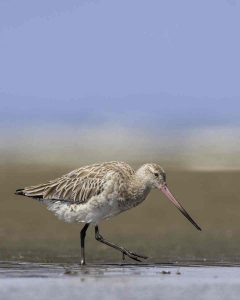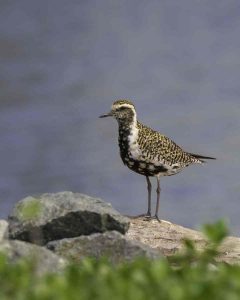Celebrating Our Long Haul Visitors
Very few feats of endurance in the animal kingdom can rival the epic, awe-inspiring journeys of migratory birds.
Saturday 14 May is World Migratory Bird Day (WMBD), giving us all a chance to observe and assist these majestic travellers and the habitat they so desperately need protected.
Here on the Cooloola Coast we are blessed and fortunate to live close to vital wetlands and beaches that act as safe havens for an array of shorebirds such as the grey-tailed tattler, eastern curlew, bar-tailed godwit, common greenshank, terek sandpiper, Pacific golden plover, whimbrel, ruddy turnstone, grey plover, lesser sand plover, curlew sandpiper, grey plover, greater sand plover, red-necked stint, and sharp-tailed sandpiper.
On our doorstep, vast tidal flats adjoin the mainland areas throughout the Great Sandy Strait and on the west coast of K’gari (Fraser Island) providing important habitat for shorebirds, where numbers have been estimated to be between 35,000 in 1993 and 25,000 in 2013.
Approximately a third of the Great Sandy Strait is intertidal mudflat or sandflat, the rest being mangroves, seagrass, saltmarsh, sandy spits, and forested islands, all which support a wide diversity of shorebirds.
Of particular note are the astonishing bar-tailed godwits, who are the world record holders for non-stop flight.
They have been recorded travelling without a break the 11,000km from Alaska to New Zealand in only 8 days, flying at an average of more than 50km/h.
The round-trip migration for this bird is more than 29,000km.
They lose almost half of their body weight along the way, which is why our local mudflats and wetlands are so vital for the ones that choose our coast as their place to rest, recuperate and gain back their strength by feeding on our shores.
World Migratory Bird Day, observed first in 2006, is recognised globally in an attempt to raise world-wide awareness of the threats faced by migratory birds (such as urban development), their ecological importance, and the need for international cooperation to conserve them.
Every year people around the world take action and organise bird festivals, educational programmes, exhibitions and bird-watching excursions to draw attention, celebrate and advance the cause of protection of these icons of the sky.
This year, to shine awareness on the precarious and vulnerable nature of the survival of migratory birds, the theme for WMBD is light pollution.
Artificial light is increasing globally by at least 2 per cent per year and it is known to have a negative impact on many bird species.
Light pollution causes disorientation for birds when flying at night, leading to collisions into buildings, disrupts their internal clocks, and interferes with their ability to undertake long-distance migrations.
As well, many vital mudflats and wetlands are under threat from plans to develop them into marinas and luxury high-rise apartments.
So on Saturday 14 May, take a moment to reflect on the amazing strength and stamina of these incredible creatures, and together we can make decisions that ensure their feeding grounds remain available for them for many flights to come.
by Melissa Marie








